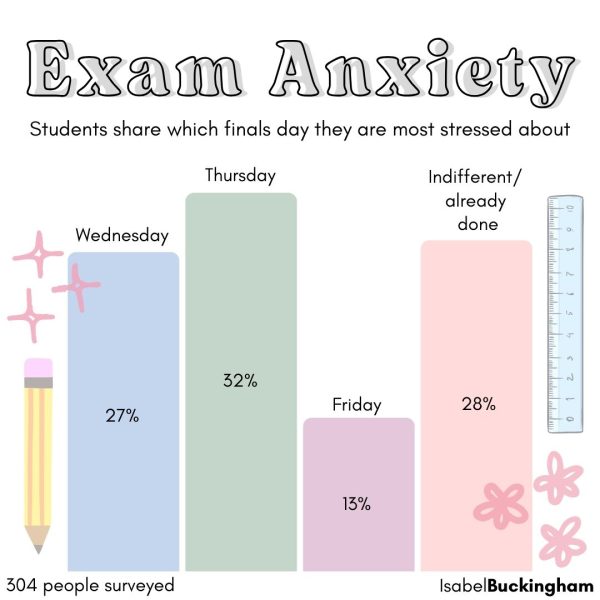Students explore the growing computer science industry
Different linguistics and languages are some of the primary causes for separation and boundaries among the human race. However, with the emergence of new technologies and the breakthrough of the Information Age, new types of mechanized phonetics have emerged, uniting purveyors of the trade across the globe. Now more than ever, fluency in these new-age languages is at an extremely high demand, and throughout the United States, a push for the education of young people in the basics of computer sciences is being made.
Computer programming languages themselves are nothing new. Programming languages with functional implementations have been around since the 1950’s. What is new, however, is the rampant demand for hiring people with programming skills. This can be traced to the ever rapidly evolving world of technology.
“We’re using computers to do more and more, all the time,” Kansas State University Professor of Computer Science Nathan Bean said. “If you look at when computers were first created, they were primarily used to perform very difficult or tedious calculations to support scientific research happening in universities. Then they spread to homes, and now you can find them in phones, in your car, in your TV, etc. With each new use that was found for computers, more programmers were needed to support the development of software to meet that need.”
America, however, has a problem. Tech companies in the United States are struggling mightily to find hirable talent in the fields of computer science.
This may come as a mystery, as the field is growing, as well as an average salary of over $75,000 per year, according to the Bureau of Labor Statistics. The answer to why there is such a shortage of computer programmers in the U.S. is rooted within the lack of implementation of this kind of education within the public school system. That, atlhough is quickly changing.
“We need to train more American programmers. STEM (science, technology, engineering and mathematics) education success has been given strategic priority by recent administrations and for good reason -— innovation and economic growth are closely tied to these social indicators,” University of Chicago Professor of Computer Science Adam Gerber said. “As an instructor of Computer Science at UChicago, I’m in a position to recommend my best students to companies wanting to hire top talent.”
The youth movement of computer science is extremely crucial to increasing the amount of technology related jobs able to be taken by home grown talent. At this point in time, Advanced Placement (AP) Computer Science is offered in only 10 percent of U.S. high schools. In 2010, the AP test for that class was taken by only 14,517 students, compared to 194,784 students that took the AP Calculus test that same year. Although, some students are finding ways to enhance their knowledge in programming without a surplus of computer science courses offered. Junior Reed Bowling is a proponent of the initiative to teach more computer science in schools and to increase the number of class options for that field of learning.
“I definitely think that schools should teach more computer science because not only is it teaching us to code with computers, but it’s also teaches us great problem solving skills,” Bowling said. “Last semester I took an independent study in computer science from Harvard, and right now I’m taking an Honors Java II class; I’m the only one in that hour.”
Southwest currently offers several classes in the computer science field, such as as basic game design courses and Java classes. This does not hold true with other American high schools, however.
Other ways of promoting computer science to youth have popped up all across the country. Launching in 2013, Code.org is an organization pushing for the mandate of adding computer science courses to core curriculum. Its goal is to allow for every student, regardless of any kind of demographic to have access to at least a basic knowledge of computer science. Code.org also started the Hour of Code initiative, a program that encourages students to try at least the simpelest of programming.
“Basically what it is, is trying to bring awareness to computer science to younger kids,” Bowling said. “It’s exposing the youth to computer science”
With promoters of Code.com ranging from Barack Obama, to Bill Gates, to Usher, the initivative has made a heavy impact on schools across the nation. Over ten million students have tried the Hour of Code, and over 60 school districts have implemented computer science curriculum around the Code.com agenda. Another goal of the program is to bring more diversity to computer science. Sixty percent of students taking online courses through Code.com are Hispanic or African-American, and 34 percent are girls. All three of those demographics have very limited number in the computer science job force.
According to the Computing Research Association, 4.5 percent of bachelor’s degrees in computer science from prestigious universities were awarded to black students, while 6.5 percent were awarded to Hispanic students.
“As the situation currently stands, knowledge of programming and coding is largely concentrated in a technological elite – computer scientists and programmers, who are predominantly white, middle class males,” Bean said. “With a single group controlling computer software with sharing a common viewpoint, the software that is developed will embrace that perspective, and everyone else must either accept it enough to work with that software, or reject it and the benefits the software bestows.”
Senior Jacob Hegna is a computer science enthusiast and thinks automation is the future of many industries.
“I think a lot of jobs in the future will be automated, so like account jobs and general business jobs and manufacturing jobs,” Hegna said. “I think being on the side of the people who are automating the process and not being on the side of people who have the jobs that are being automated is good for sustainability”
The future of the computer science job force is still up in the air; although major strides are being made. With a field full of benefits and job opportunities galore, American tech companies may eventually end their desperation for talented personnel.
“Want to help cure cancer? An important tool in that effort is computer models of cells, proteins and DNA. Want to end world hunger? The United States alone discards a staggering amount of spoiled food; computerization of the food distribution network promises to reduce that waste, allowing excess resources to be diverted to hungry mouths,” Bean said. “Computers are used in so many different ways; the role you can have as a computer scientist is equally as broad.”











